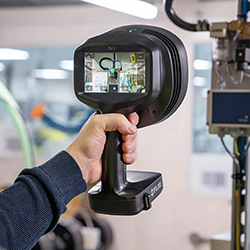How the Additive Manufacturing Industry Emphasized End-Use Part Production at Rapid + TCT 2023
Unlocking the Value Potential of Additive Manufacturing
6 Steps to Industrial Digital Transformation
Reverse Engineering for a Model-Based World
Three Eras of Machine Learning ~ a New Paradigm for Quality Inspection
Focus your 2023 Technology Investments on Unearthing New Value
Four Ways to Address the Industry's Technician Shortage
Solving Labor Challenges with Paperless Manufacturing
Talking AUTOMATE 2023 with CIMON Automation
How Thoughtful Authentication Supports Your Sustainability Strategy
Automate 2023 Product Preview
Why smart interconnection is essential for building the factories of the future
Addressing Quality Issues in 3D Printing
Being a Good Steward
Looking to the Future: Visual Commerce in Manufacturing
Records 421 to 435 of 1915
First | Previous | Next | Last
Engineering - Featured Product

